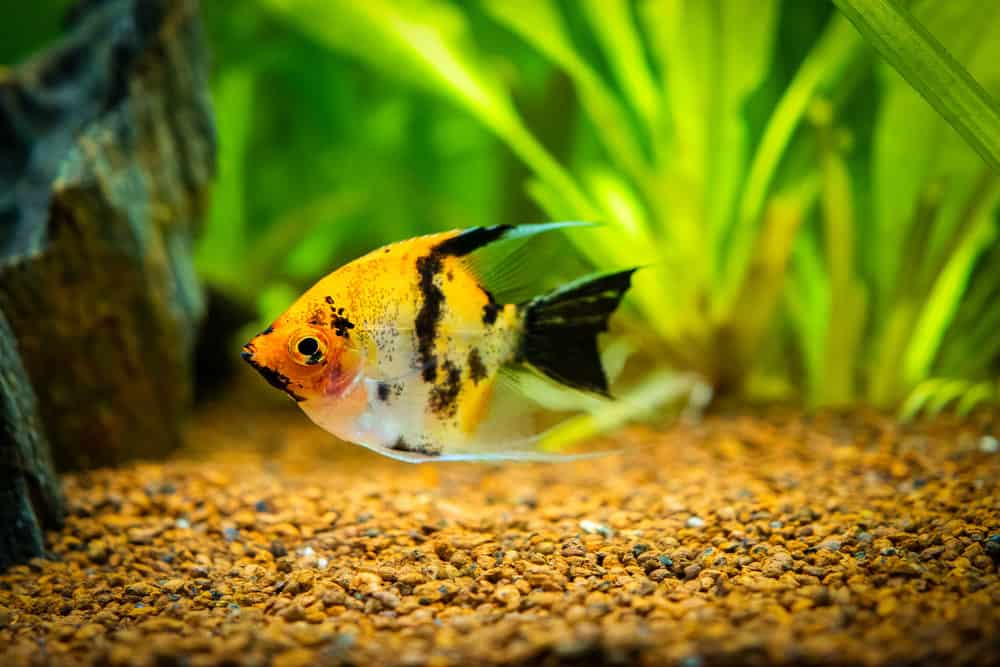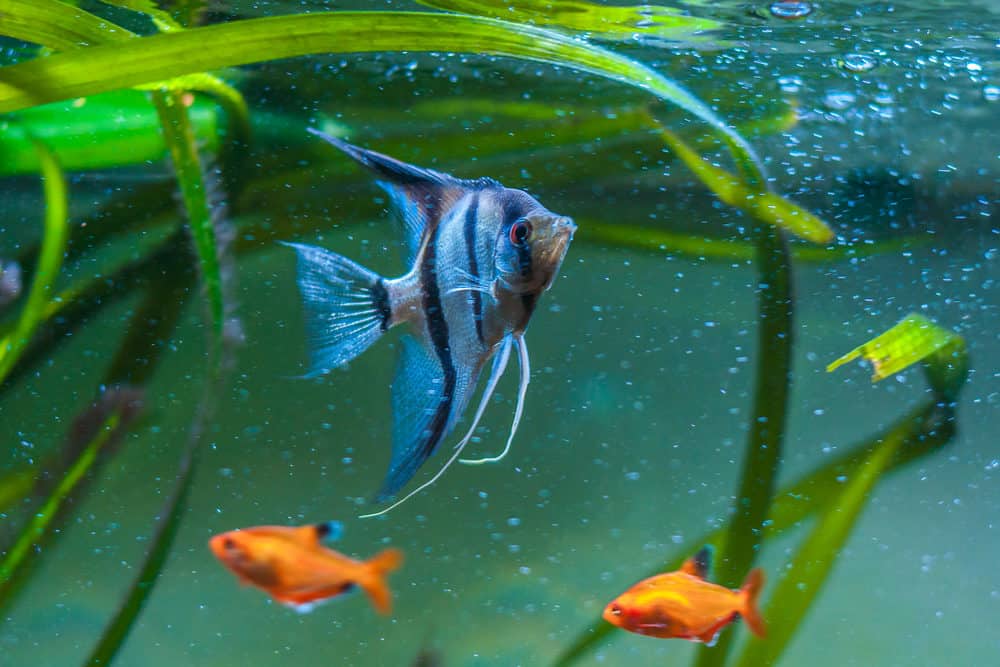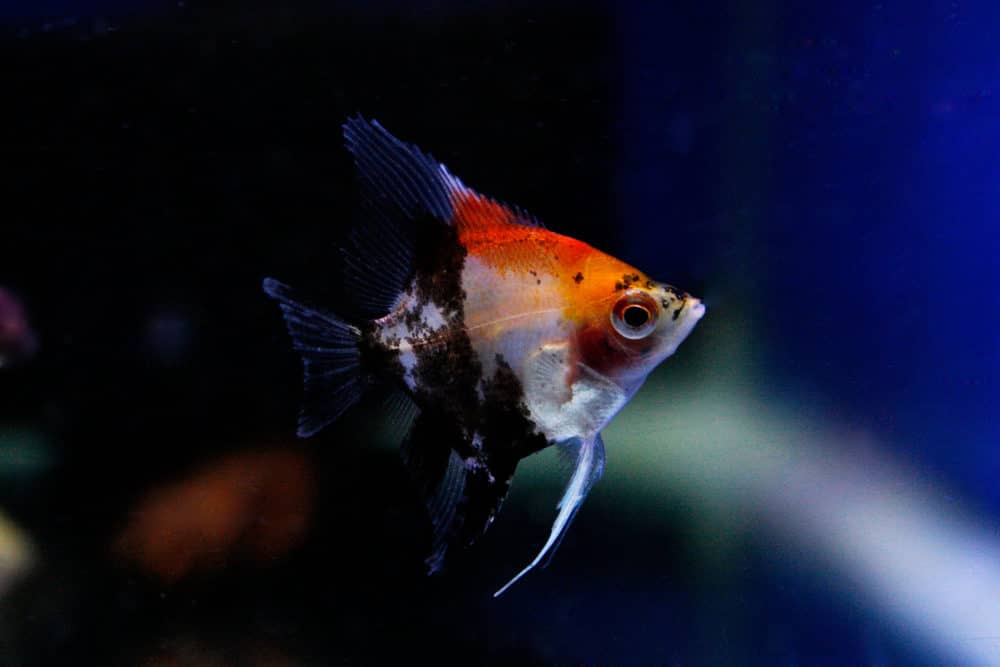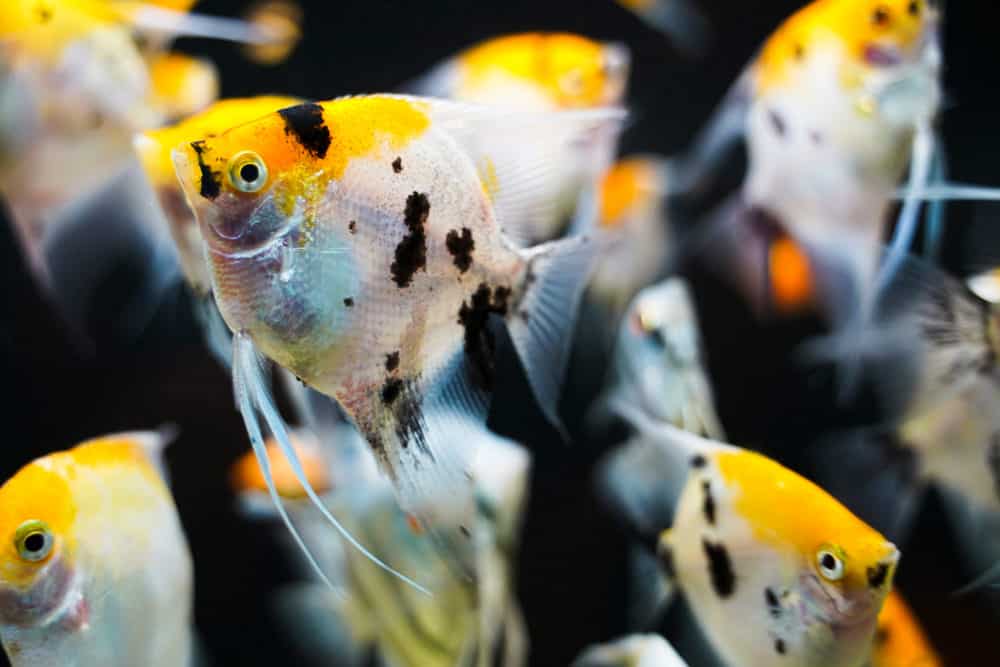Koi angelfish (Pterophyllum Scalare) are not actually a Koi species, so you won’t find them in a Koi pond. Instead, they are angelfish with Koi-like markings. These beautiful tropical fish originated in the Amazon of Peru and Ecuador and have become one of the most popular aquarium fish breeds worldwide.

Like all angelfish, the Koi angel is a graceful, peaceful fish with an eye-catching appearance and an impressive lifespan of up to ten years under the right tank conditions. Read on to learn more about this famous fish’s appearance, temperament, ideal habitat, compatibility, and care.
The Koi angel is a relatively tall fish with long, delicate fins. While this freshwater fish has been bred to reproduce coloration similar to the Koi, the markings on each Koi angel fish are unique.
The mottled colors of the Koi angel - black, red, yellow, white, and orange - form intricate patterns on various areas of the body, making these freshwater angelfish truly striking in appearance.

Koi angels are generally peaceful fish. They can share a habitat with many other kinds of freshwater fish. Be aware, however, that the Koi angel will eat smaller fish. This is not a result of aggression but simply because the angelfish will eat anything it can fit into its mouth.
While Koi angels are not aggressive fish, they should be grouped singly, as a mated pair, or in six groups. Doing this prevents a dominant fish from bullying its tank-mates.

Koi angels are taller than many other freshwater aquarium fish, so they require a tall tank to thrive truly. The ideal aquarium conditions for a Koi angelfish are as follows:

The best aquarium environment for a Koi angel also includes plenty of plantlife similar to those of its native habitat, ideally driftwood and large, broad-leafed plants. You can also include floating plants to add shade.
Koi angels are omnivorous, so they will eat most foods typically served to tropical aquarium freshwater fish. They are especially fond of tubifex worms and blood worms but are content to eat flakes, frozen food, and pellets.
You should feed Koi angelfish the amount they can eat in three to five minutes twice a day. Note that the Koi angel is slower-moving than other breeds, so if it is housed with quicker fish, you may need to increase the feedings to three times a day to ensure the angelfish gets enough to eat.

Between eight and twelve months of age, Koi angels become mature enough to breed. Female angelfish clean off a flat surface to lay their eggs, then a male fertilizes them. Koi angels will eat their eggs or fry, fertilized or not, so many Koi angel keepers separate the eggs once they have been fertilized.



